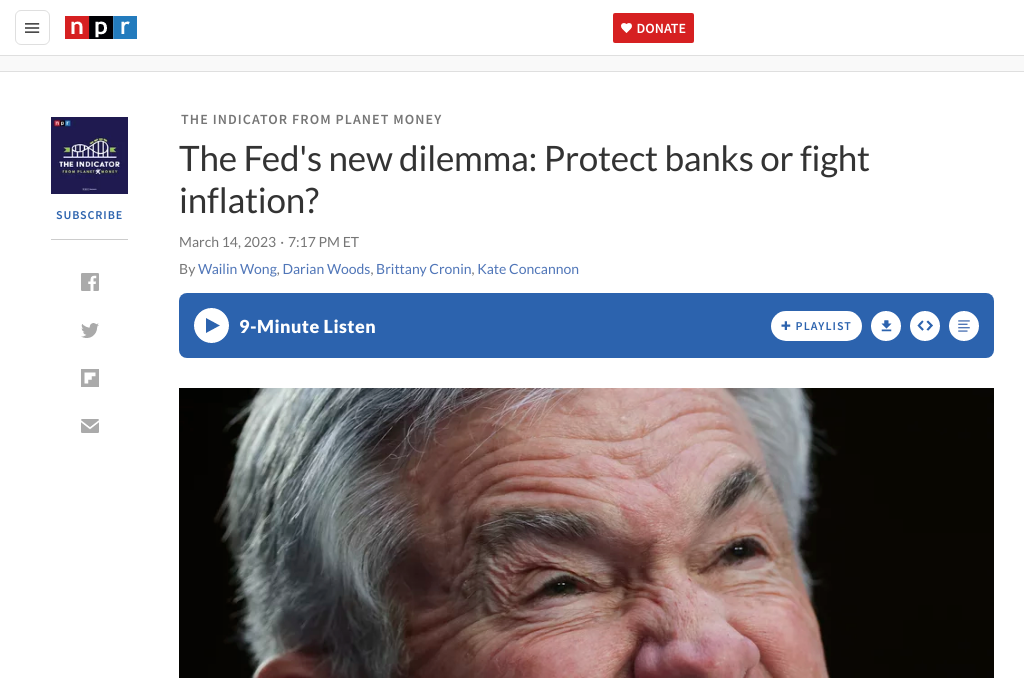The Consumer Price Index (CPI) revealed that headline inflation rose 0.4% over last month and 6% over the prior year in February, representing a slowdown from January’s 0.5% month-over-month increase and 6.4% annual gain. Data from Bloomberg indicated that both measures were in line with economist expectations.[0] Core inflation, which strips out the more volatile costs of food and energy, rose 0.5% over the prior month in February and 5.5% over last year, marking the smallest 12-month increase since December 2021.
At the wholesale level, producer prices fell 0.1% in February, with the 12-month inflation rate at 4.6%. On Wednesday, the Labor Department announced that the Producer Price Index (PPI), which measures inflation at the wholesale level before it reaches the public, decreased by 0.1% in February compared to the month prior. Last summer, consumer prices reached a level not seen in about four decades, climbing to a peak of 9.1%.[0]
Retail sales fell 0.4% in February, according to data that is not adjusted for inflation.[1] Auto sales declined 1.8%, causing the total to match expected figures.[2]
The Federal Reserve has found itself in a difficult situation, having to raise rates enough to combat the high inflation but not so much that it leads to a recession, which would cause the economy to contract.[3] Still, “inflation is not the sole focus of the Fed, as it now needs to take into consideration financial stability and lending conditions,” said Rubeela Farooqi of High Frequency Economics in a research note.[4]
Prior to the banking crisis, the Fed was widely expected to raise its benchmark rate by at least a quarter percentage point and possibly half a point at its March 21-22 meeting. However, the latest inflation data could spur the Fed to press ahead in its effort to tighten monetary conditions, with 53% of traders pricing in a 25-basis-point hike.
The Federal Reserve has hiked interest rates by a cumulative 4.5% over the past year in an effort to quell inflation as Fed Chair Jerome Powell commits to aggressive monetary policy. Prices are still going up, according to the latest inflation data that dropped this morning, making it a big problem for consumers, who have to pay more for everything from cereal to rent and airfare.[5]
0. “Inflation: Consumer prices rise 6% over last year in February, slowest since Sept. 2021” Yahoo News, 14 Mar. 2023, https://news.yahoo.com/inflation-report-february-cpi-data-march-14-105141134.html
1. “Key inflation measure shows wholesale prices fell last month” CNN, 15 Mar. 2023, https://www.cnn.com/2023/03/15/economy/ppi-producer-inflation-wholesale-prices-february/index.html
2. “Wholesale prices post unexpected decline of 0.1% in February; retail sales fall” CNBC, 15 Mar. 2023, https://www.cnbc.com/2023/03/15/ppi-february-2023-.html
3. “Headline CPI fractionally lower as gold futures hold key $1900 level” Kitco NEWS, 14 Mar. 2023, https://www.kitco.com/commentaries/2023-03-14/Headline-CPI-fractionally-lower-as-gold-futures-hold-key-1-900-level.html
4. “Fed rate pause is a tough call after inflation reaccelerates” Moneycontrol, 15 Mar. 2023, https://www.moneycontrol.com/news/world/fed-rate-pause-is-a-tough-call-after-inflation-reaccelerates-10250741.html
5. “Will the Fed keep raising interest rates? : The Indicator from Planet Money” NPR, 14 Mar. 2023, https://www.npr.org/2023/03/14/1163486839/the-feds-new-dilemma-protect-banks-or-fight-inflation
